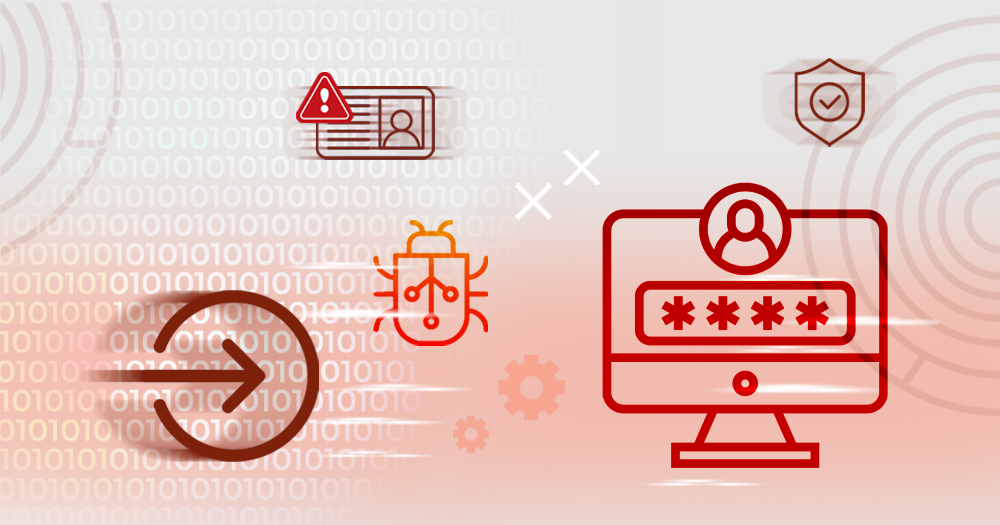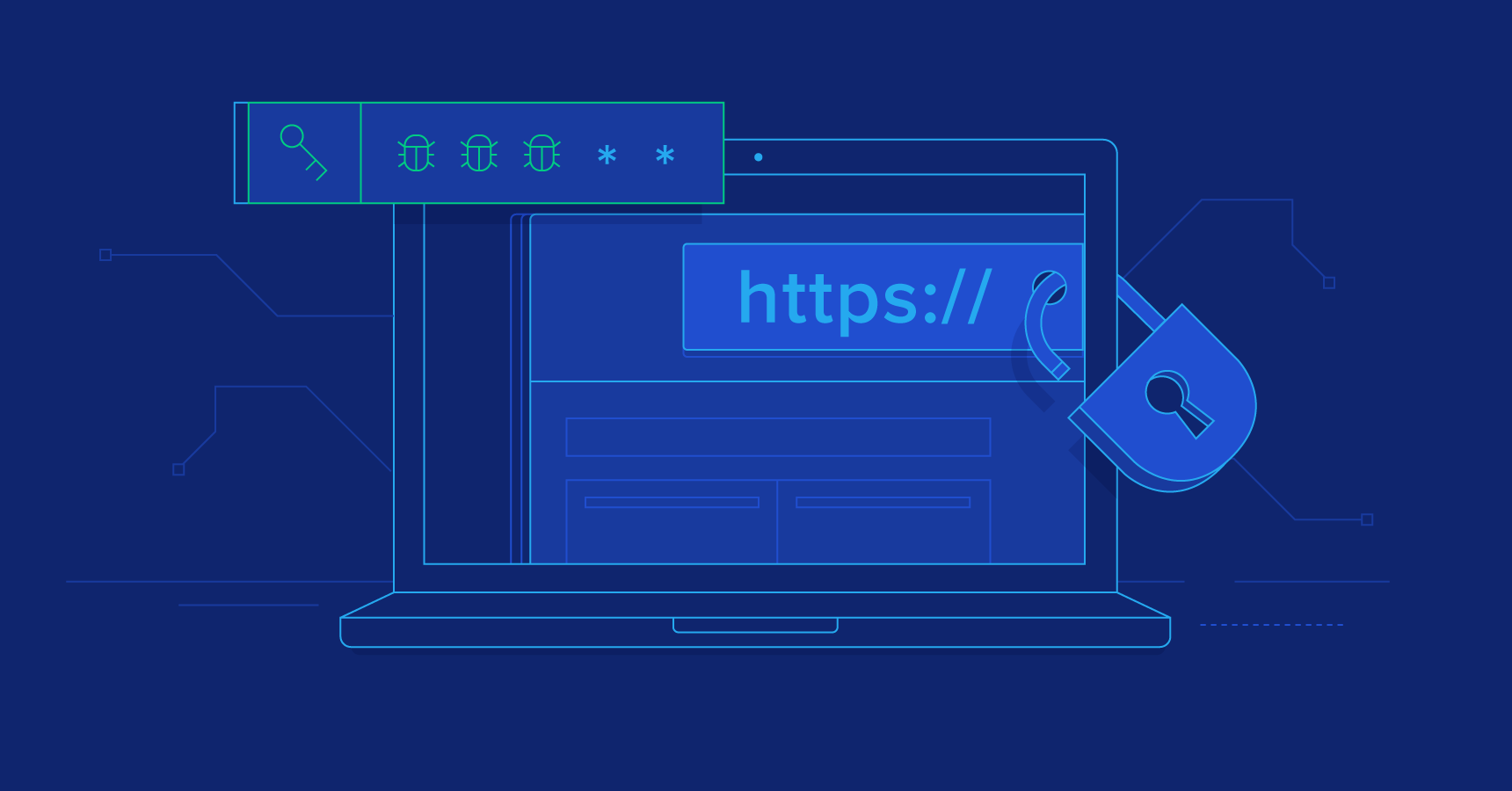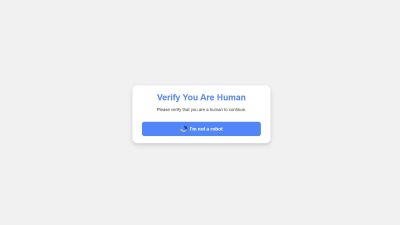In this digital age, where everything revolves around the internet, the security of our online data has become a top priority. In this article, we will delve into the intriguing world of web vulnerabilities and expose the cunning tactics employed by hackers. Understanding these vulnerabilities is key to protecting ourselves and our valuable information in the vast virtual landscape of the internet.
The internet has become an integral part of our lives, shaping how we communicate, work, and interact with the world. Websites and web applications are the building blocks of this digital realm, but they are not immune to vulnerabilities. In this comprehensive guide, we’ll delve into the world of web vulnerabilities, exploring what they are, why they matter, and how to protect yourself from them.
What Are Web Vulnerabilities?
Web vulnerabilities are weaknesses or flaws in websites and web applications that can be exploited by malicious actors. These vulnerabilities can lead to unauthorized access, data breaches, and various other security threats. Think of them as the weak points in the armor of a website’s defenses.
Common Types of Web Vulnerabilities
Web vulnerabilities are security weaknesses or flaws in web applications and websites that can be exploited by malicious actors to gain unauthorized access, steal data, or disrupt the functionality of the site. Here are some common types of web vulnerabilities:
- Injection Attacks:
- SQL Injection (SQLi)
Attackers insert malicious SQL queries into input fields, exploiting poorly sanitized user inputs to manipulate a database. - Cross-Site Scripting (XSS)
Malicious scripts are injected into web pages viewed by other users, often via input fields or URL parameters. - Cross-Site Request Forgery (CSRF)
Attackers trick users into making unintended actions on a different site where they are authenticated.
- SQL Injection (SQLi)
- Authentication and Session Management:
- Session Fixation
An attacker sets a user’s session ID, potentially allowing them to impersonate the user. - Brute Force Attacks
Repeated login attempts to guess a user’s password. - Password Hash Cracking
Attackers attempt to reverse-engineer hashed passwords to obtain the original password.
- Session Fixation
- Insecure Deserialization
Attackers manipulate serialized data to execute malicious code or gain unauthorized access. - Insecure Direct Object References (IDOR)
Unauthorized access to an object (e.g., file or database record) by manipulating input parameters. - Security Misconfiguration
Poorly configured servers, databases, or web applications may expose sensitive information or provide unauthorized access. - Sensitive Data Exposure
Failure to protect sensitive data, such as passwords or credit card numbers, can lead to data breaches. - XML External Entity (XXE) Attacks
Malicious XML input can exploit vulnerable XML parsers to disclose internal files or execute arbitrary code. - Broken Authentication
Flaws in authentication mechanisms, like weak password policies or predictable session tokens, can lead to unauthorized access. - Unvalidated Redirects and Forwards
Attackers manipulate URLs to redirect users to malicious sites or perform actions on their behalf. - Server-Side Request Forgery (SSRF)
Attackers trick a server into making requests to internal resources, potentially exposing sensitive data or services. - File Upload Vulnerabilities
Insufficient validation of file uploads can lead to execution of malicious code or unauthorized access. - Clickjacking
Malicious sites are disguised as legitimate ones to trick users into clicking on hidden, malicious elements. - Denial of Service (DoS) and Distributed Denial of Service (DDoS) Attacks
Overloading a web server or application to make it unavailable to users. - Security Headers Missing
Lack of proper security headers like Content Security Policy (CSP), HTTP Strict Transport Security (HSTS), or X-Content-Type-Options can leave the site vulnerable. - API Security Issues
Insecure APIs can expose data and functionality, leading to unauthorized access or data breaches. - CORS (Cross-Origin Resource Sharing) Misconfigurations
Poorly configured CORS policies can lead to cross-origin attacks. - DOM-Based Vulnerabilities
Flaws in the Document Object Model (DOM) can allow attackers to manipulate client-side scripts and inject malicious code.
It’s crucial for developers and security professionals to be aware of these vulnerabilities and take appropriate measures to mitigate them through secure coding practices, penetration testing, and regular security audits. Keeping software and libraries up-to-date and adhering to best security practices are essential for maintaining a secure web application or website.

Why Web Vulnerabilities Matter
Web vulnerabilities matter significantly because they pose significant risks to the security, privacy, and functionality of websites and web applications. Here are several reasons why web vulnerabilities are of great concern:
- Data Breaches
Web vulnerabilities can lead to unauthorized access to sensitive data, including personal information, financial records, and confidential business data. When attackers exploit these vulnerabilities, they can steal, manipulate, or delete data, leading to data breaches that can have severe legal, financial, and reputational consequences for individuals and organizations. - Financial Loss
Web vulnerabilities can result in financial losses for both individuals and businesses. This can include the cost of data recovery, legal fees, regulatory fines, and loss of revenue due to downtime or a damaged reputation. - Privacy Violations
Vulnerabilities that allow unauthorized access to user accounts or personal information can result in severe privacy violations. Users trust websites and web applications to protect their data, and breaches can erode that trust. - Identity Theft
Some web vulnerabilities, such as SQL injection and data exposure, can lead to identity theft. Attackers can steal user credentials and use them for malicious purposes, including financial fraud and unauthorized access to other online accounts. - Disruption of Services
Web vulnerabilities can be exploited to disrupt the normal functioning of websites and web applications. Denial-of-Service (DoS) and Distributed Denial-of-Service (DDoS) attacks can overwhelm servers and make online services unavailable to users, leading to financial losses and loss of user trust. - Malware Distribution
Vulnerable websites can be compromised and used to distribute malware to visitors. This can result in infecting users’ devices and potentially spreading malware further across the internet. - Reputation Damage
Security breaches and vulnerabilities can damage an organization’s reputation. Customers may lose trust in a business or website if they perceive it as insecure, leading to a loss of customers and revenue. - Legal and Regulatory Consequences
Depending on the nature of the data involved and the jurisdiction, organizations that fail to protect against web vulnerabilities may face legal consequences, regulatory fines, and compliance challenges, such as violations of data protection laws like GDPR. - Competitive Disadvantage
Organizations that are known for having insecure web applications may face a competitive disadvantage. Customers are more likely to choose services that prioritize security and protect their data. - Continual Evolution of Attack Techniques
Cybersecurity threats and attack techniques are continually evolving. As vulnerabilities are discovered and mitigated, new ones emerge. Staying vigilant and addressing web vulnerabilities is an ongoing process to keep up with the changing threat landscape.
web vulnerabilities matter because they can result in data breaches, financial losses, privacy violations, service disruptions, and reputational damage. Addressing and mitigating these vulnerabilities is essential to maintaining the security and trustworthiness of websites and web applications in an increasingly digital world.
Protecting Against Web Vulnerabilities
Now that we’ve explored common web vulnerabilities, let’s discuss how you can protect your websites and web applications from these threats.
- Regular Security Audits
Perform regular security audits of your websites and applications. Identify and fix vulnerabilities before they can be exploited by attackers. - Input Validation and Sanitizatio
Implement robust input validation and sanitization procedures to prevent SQL injection and XSS attacks. Ensure that user-supplied data is properly filtered and sanitized before processing. - Use of Security Headers
Utilize security headers like Content Security Policy (CSP) and HTTP Strict Transport Security (HSTS) to enhance your website’s security posture. - Strong Authentication
Enforce strong password policies, implement multi-factor authentication (MFA), and ensure secure session management to prevent broken authentication vulnerabilities. - Regular Updates and Patch Management
Keep your software, frameworks, and libraries up to date. Apply security patches promptly to address known vulnerabilities. - Security Training
Educate your development and IT teams about web vulnerabilities and secure coding practices. Awareness and training are key to preventing security flaws.
Defining Web Exploits
Web exploits, also known as web vulnerabilities or web application vulnerabilities, are weaknesses or flaws in websites and web applications that malicious actors can exploit to compromise security. Think of them as the chinks in the armor of a website’s defenses.

Common Web Exploits
Web exploits are techniques or attacks used by malicious actors to take advantage of vulnerabilities in web applications, websites, or web servers. These exploits can lead to unauthorized access, data breaches, and various other security incidents. Here are some common web exploits:
- SQL Injection (SQLi)
Attackers inject malicious SQL queries into web application inputs to manipulate a database, potentially extracting, modifying, or deleting data. - Cross-Site Scripting (XSS)
Malicious scripts are injected into web pages viewed by other users, enabling attackers to steal session cookies, redirect users, or deface websites. - Cross-Site Request Forgery (CSRF)
Attackers trick users into performing unwanted actions on a web application where the user is authenticated, potentially changing settings or performing actions on their behalf. - Remote Code Execution (RCE)
Attackers exploit vulnerabilities that allow them to execute arbitrary code on a web server or application, gaining complete control over it. - Command Injection
Malicious commands are injected into system commands, often through input fields, and executed on the server, potentially leading to unauthorized access or data manipulation. - Path Traversal
Attackers manipulate file paths to access files and directories outside of the web root directory, potentially exposing sensitive information. - Server-Side Template Injection (SSTI)
Attackers inject code into templates processed on the server, potentially leading to RCE or data exposure. - XML External Entity (XXE) Attacks
Malicious XML input is used to exploit vulnerable XML parsers, potentially disclosing sensitive data or executing arbitrary code. - Insecure Deserialization
Attackers manipulate serialized objects to execute malicious code or gain unauthorized access. - File Upload Exploits
Insufficient validation of file uploads can enable attackers to upload and execute malicious files, potentially gaining control of the server. - Directory Traversal
Attackers manipulate URLs or input fields to traverse directories and access sensitive files or directories. - Insecure Direct Object References (IDOR)
Attackers manipulate input parameters to access unauthorized resources or perform actions on behalf of other users. - Server-Side Request Forgery (SSRF)
Attackers trick a server into making requests to internal resources, potentially exposing sensitive data or services. - Clickjacking
Malicious sites are disguised as legitimate ones, tricking users into clicking on hidden, malicious elements. - Session Fixation
Attackers set a user’s session ID, potentially allowing them to impersonate the user. - Brute Force Attacks
Repeated login attempts are made to guess a user’s password. - Denial of Service (DoS) and Distributed Denial of Service (DDoS) Attacks
Overloading a web server or application to make it unavailable to users. - Phishing
Attackers create fake websites or emails that appear legitimate to steal user credentials or personal information. - Credential Stuffing
Stolen usernames and passwords from one site are used to gain unauthorized access to other sites, exploiting users who reuse passwords. - Man-in-the-Middle (MitM) Attacks
Attackers intercept and potentially modify communication between users and web applications to steal data or inject malicious content.
These common web exploits highlight the importance of implementing robust security measures, conducting regular security testing, and staying updated on emerging threats to protect web applications and websites from malicious attacks.
Why Web Exploits Matter
Web exploits matter for several important reasons, as they have far-reaching consequences for individuals, organizations, and society as a whole:
- Data Breaches
Exploiting web vulnerabilities can lead to unauthorized access to sensitive data, such as personal information, financial records, and intellectual property. This data can be stolen, manipulated, or deleted, resulting in data breaches that can have severe consequences for individuals and organizations. - Financial Loss
Exploits can lead to significant financial losses. Organizations may incur costs related to data recovery, legal fees, regulatory fines, and the loss of revenue due to downtime or reputational damage. - Privacy Violations
Web exploits can result in severe privacy violations. Users trust websites and web applications to protect their personal and sensitive information, and when this trust is violated, it can lead to emotional distress and potential harm. - Identity Theft
Certain web exploits, such as credential theft through phishing or data breaches, can lead to identity theft. Attackers can use stolen credentials to impersonate individuals, commit fraud, and gain unauthorized access to various online accounts. - Disruption of Services
Exploits can be used to disrupt the normal functioning of websites and web applications. Denial-of-Service (DoS) and Distributed Denial-of-Service (DDoS) attacks can overwhelm servers, making online services unavailable to users and causing financial losses. - Malware Distribution
Compromised websites can be used as platforms to distribute malware to unsuspecting visitors. This can lead to the infection of users’ devices and further spread of malware across the internet. - Reputation Damage
Organizations that fall victim to web exploits can suffer reputational damage. Users may lose trust in a business or website that is perceived as insecure, leading to a loss of customers, revenue, and long-term damage to the brand’s reputation. - Legal and Regulatory Consequences
Depending on the nature of the data involved and the applicable regulations, organizations that fail to protect against web exploits may face legal consequences, regulatory fines, and compliance challenges. For example, data protection laws like GDPR impose strict requirements on data security. - Competitive Disadvantage
Organizations known for having insecure web applications or websites may face a competitive disadvantage. Users are more likely to choose services that prioritize security and protect their data. - Continual Evolution of Threats
The landscape of cyber threats and web exploits is continually evolving as attackers develop new techniques and tools. Staying vigilant and addressing web exploits is an ongoing process to keep up with emerging threats.
Web exploits matter because they can result in data breaches, financial losses, privacy violations, service disruptions, identity theft, reputational damage, legal consequences, and competitive disadvantages. Addressing and mitigating these exploits is crucial for maintaining the security, privacy, and trustworthiness of web applications and websites in an increasingly digital world.

Guarding Against Web Exploits
Now that we’ve explored common web exploits, let’s discuss how you can protect your websites and web applications from these threats.
- Regular Security Audits
Perform routine security audits of your websites and applications. Identify and rectify vulnerabilities before malicious actors can exploit them. - Input Validation and Sanitization
Implement robust input validation and sanitization procedures to prevent SQL injection and XSS attacks. Ensure that user-supplied data is thoroughly filtered and sanitized before processing. - Use of Security Headers
Leverage security headers such as Content Security Policy (CSP) and HTTP Strict Transport Security (HSTS) to bolster your website’s security posture. - Strong Authentication
Enforce stringent password policies, implement multi-factor authentication (MFA), and ensure secure session management to prevent broken authentication vulnerabilities. - Timely Updates and Patch Management
Keep your software, frameworks, and libraries up to date. Apply security patches promptly to address known vulnerabilities. - Security Training
Educate your development and IT teams about web exploits and secure coding practices. Awareness and training are vital to preventing security flaws.
The Evolving Landscape of Web Exploits
Web exploits are constantly evolving as attackers discover new methods to target websites and applications. Here are some emerging trends to keep an eye on:
- API Security
As web applications increasingly rely on APIs (Application Programming Interfaces), API security has become a significant concern. Ensure that your APIs are properly secured and authenticated. - Serverless Security
The adoption of serverless computing introduces new security challenges. Understand the unique risks associated with serverless architectures and implement appropriate security measures. - Supply Chain Attacks
Attackers may target the software supply chain, injecting malicious code into third-party libraries or dependencies. Regularly audit your software supply chain for vulnerabilities. - Zero-Day Exploits
Zero-day vulnerabilities are those not yet known to the software vendor. Be prepared to respond swiftly to emerging threats and apply patches as soon as they become available.
Conclusion
In the ever-evolving landscape of the internet, web exploits pose a continuous threat to the security and integrity of websites and web applications. Understanding these exploits, remaining vigilant, and implementing robust security measures are essential to protect your digital assets and maintain trust













